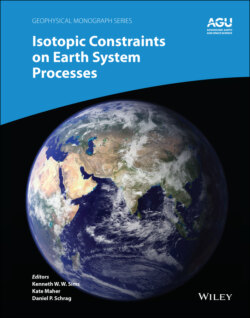Читать книгу Isotopic Constraints on Earth System Processes - Группа авторов - Страница 58
Model Validation and Behavior
ОглавлениеThe Zhang (1993) model deviates significantly from the EBD model when the component of interest diffuses significantly faster than SiO2. In this situation, which is common in silicate liquids, the component of interest will not reach homogeneity quickly, but rather, will partition along the compositional continuum between the high‐ and low‐silica liquids and reach compositional homogeneity only as fast as SiO2 diffuses.
The behavior of the model is shown in Fig. 2.6 for an infinite diffusion couple where the initial concentration gradient is small and = 8. If Cf is negative (Fig. 2.6a), the element partitions into the high‐silica liquid and the hypothetical Ce gradient opposes the concentration gradient. In this case, mass diffuses from the high concentration to the low concentration side at a higher rate than if Cf=0, resulting in a pair of bumps in the concentration profile. If Cf is positive (Fig. 2.6b), the activity gradient is opposite the concentration gradient and uphill diffusion occurs. Note that in both cases, the Ce profile evolves at a rate given by Db (equation 2.6) and is thus less evolved than the concentration profiles exhibiting uphill diffusion.
Figure 2.6 Model behavior showing concentration, activity, and transient equilibrium concentration profiles for C− = 6 wt%, C+ = 8 wt%, /Db = 8, and variable Cf. The top panel is identical to Fig. 2c in Zhang (1993) to validate the Matlab code used in calculations herein. For an element with small initial concentration contrast, the sign and magnitude of uphill diffusion depends on the sign and magnitude of Cf, which describes how the element partitions between high silica versus low silica liquids.
